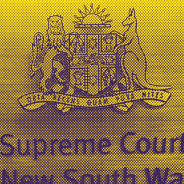Children as young as 10 years old are being placed on “hidden” police blacklist before they have even committed a crime, but the STMP has not been shown to be effective at deterring or preventing crime. Sam Lee explans that the justification behind the police program is “ to prevent criminal activity in the future" but says "there is no actual evidence to support this hypothesis.”
A 2017 report issued by the Youth Justice Coalition NSW found that young people and Aboriginal and Torres Strait Islander Australians are disproportionately targeted by the program, with 48.8% of people listed under the STMP being young people under 25, and 54% of people being Aboriginal and Torres Strait Islander people.
The report expressed concern around the unjustified secrecy surrounding the program. STMP guidelines not publicly available, with individuals targeted by the program either unaware they have been placed on the STMP, or are unable to access the reasons why they have been placed on STMP, nor how to get removed. This lack of transparency around the operation of the STMP without external scrutiny is particularly concerning given the program's damaging effects on young people.
As Sam explains, a 2005 Ombudsman report identified that the STMP “further entrenches young people in the criminal justice system, the complete opposite of what it is meant to do.”
The report recommends the discontinuation of STMP protocols applying to children under 18, with reoffenders instead to be considered for evidence-based prevention programs. The report also pushes for publicly available information regarding the STMP policy, more formal police training regarding its operation and publically available evaluation data examining its effectiveness.
Listen to The Wire interview (2ser, 28 August 2018)
See also
Youth Justice Coalition NSW report (November 2017)


